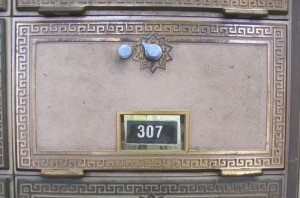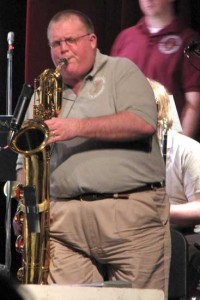Goodhue Wind — a project that stinks by any name…
June 20th, 2013
PUC pulls plug on Goodhue Wind project!
‘Bout time this project went down… What a thorny long drawn-out heated and circular discussion, but after a long five years, the Public Utilities Commission said no to Peter Mastic’s New Era and its request for an extension of time to get the project in service and operational. Did I mention this has been a long journey? It took five long years of persistent work on so many fronts, dogged work on the part of so many people! L-O-N-G! I first met with Goodhue Wind Truth and started representing them in late 2008, early 2009.
Just from today I have 12 pages of notes, so here’s the nutshell version, from the two page Revised Decision Options:
- After a protracted discussion, they first voted to DENY Todd Guererro’s Motion for another two weeks to prepare as he was just hired on. Nope, says the Commission, we don’t buy it, New Era f/k/a/ f/k/a has had plenty of time.
- And after an even longer more protracted and circular discussion, the Commission voted UNANIMOUSLY decision options 2 I & J:
- Then came their vote on the Extension Request as a housekeeping matter:
- And then, at the bottom of page 2, adding “August 23, 2013” as the date certain for a response:
DONE!
GOOD RIDDANCE!
Todd Guererro, representing Peter Mastic f/k/a f/k/a, did a valiant job given what he had to work with, a client who didn’t bother to comply with PUC Orders, Information Requests, and laws — he deserves battle pay for taking the hits hurled by the Commissioners, deserved, but he did the best job possible… well, except he apparently didn’t know that the Commission had made the determination that the project was a C-BED project many years ago, that it was not the Commissioner of Commerce.
I kept my trap shut, thinking “less is more.”
IT’S DONE!
IT’S REALLY DONE!
And an interesting sidebar, NSP had its crew there to monitor its interests (Verified Complaint for Declaratory Judgment, and what a delightful Complaint it is!), and I learned that my arch-nemesis Mike Krikava is a horn player, has a big band of reknown, Nova Contemporary Jazz Orchestra (not Les Brown, perhaps Minnesota’s Toshiko Akiyoshi??), and even played with Ed Berger. Mike brought it up, wondering how I knew the “real outside” Ed, but folks, it’s a small, small world… who knew?!?
And that after he ruins his reputation with his “heart-shaped” dot in his signature as noted by at least two of my GWT client’s cohorts:
Kinda skews my view, though the blustery honking of Bari fits him well. It’s sort of like Mark Dayton being a shep nut — I will have higher expectations — we shall see… but if Krikava were a trumpet player, well, that’d be another matter entirely.
In the Rochester Post Bulletin tonight:
PUC commissioner: It’s time to pull the plug on New Era project
Rulemaking – Certificate of Need 7849
June 12th, 2013
How to work up excitement about the Certificate of Need rulemaking??? On its own, it’s dry, detailed, wonkish stuff, thrilling only to those of us who live and breathe need decisions and utility infrastructure siting and routing… but may there’s some pizazz in the machinations surrounding input, like lack of public representation on the Advisory Committee such that even my tremendous bulk doesn’t even it out. Does Xcel deserve THREE representatives? ITC two? “Participating Utilities” two, “Wind Coalition” one and none for Goodhue Wind Truth? Here’s the list:
Plus they’re not posting the drafts on the rulemaking site, so the public has no idea what’s being proposed:
And minutes from the first meeting:
To get to the docket, go to www.puc.state.mn.us and then “search eDockets” and search for 12-1246.
We’ll be talking about the Certificate of Need criteria next, and here’s what’s proposed:
7849.0120 CRITERIA CERTIFICATE OF NEED REQUIREMENTS.
A certificate of need must be granted to the applicant on determining that:
Subpart 1. Need Demonstration. An applicant for a certificate of need must demonstrate that the demand for electricity cannot be met more cost effectively through energy conservation and load-management measures.
Subpart 2. Renewable Resource Preferred. An applicant proposing an LEGF that uses a nonrenewable energy source must demonstrate that it has considered the use of renewable energy sources, as required under Minnesota Statutes section 216B.243, subd. 3a.
Subpart 3. Assessment of Need Criteria. In evaluating a certificate of need application, the
commission shall consider the criteria contained in Minnesota Statutes, section 216B.243, subd. 3, as well as the following:
A. whether the probable result of denial would be an adverse effect upon the future adequacy, reliability, or efficiency of energy supply to the applicant, to the applicant’s customers, or to the people of Minnesota and neighboring states, considering: the region;
(1) the accuracy of the applicant’s forecast of demand for the type of energy that would be supplied by the proposed facility;
(2) the effects of the applicant’s existing or expected conservation programs and state and federal conservation programs;
(3) the effects of promotional practices of the applicant that may have given rise to the
increase in the energy demand, particularly promotional practices which have occurred since 1974;
(4) B. the ability of current facilities and planned facilities not requiring certificates of need to meet the future demand; and
(5) the effect of the proposed facility, or a suitable modification thereof, in making efficient use of resources;
B C. whether a more reasonable and prudent alternative to the proposed facility has not been demonstrated by a preponderance of the evidence on the record, considering:;
(1) D. the appropriateness of the size, the type, and the timing of the proposed facility compared to those of reasonable alternatives;
(2) E. the cost of the proposed facility and the cost of energy to be supplied by the proposed facility compared to the costs of reasonable alternatives and the cost of energy that would be supplied by reasonable alternatives;
(3) F. the effects of the proposed facility upon the natural and socioeconomic environments compared to the effects of reasonable alternatives; and
(4) G. the expected reliability of the proposed facility compared to the expected reliability of reasonable alternatives;
C. by a preponderance of the evidence on the record, the proposed facility, or a suitable modification of the facility, will provide benefits to society in a manner compatible with protecting the natural and socioeconomic environments, including human health, considering:
(1) the relationship of the proposed facility, or a suitable modification thereof, to overall state energy needs;
(2) H. the effects of the proposed facility, or a suitable modification thereof, upon the natural and socioeconomic environments compared to the effects of not building the facility;
(3) I. the effects of the proposed facility, or a suitable modification thereof, in inducing future development; and
(4) J. the socially beneficial uses of the output of the proposed facility, or a suitable modification thereof, including its uses to protect or enhance environmental quality; and.
D. the record does not demonstrate that the design, construction, or operation of the proposed facility, or a suitable modification of the facility, will fail to comply with relevant policies, rules, and regulations of other state and federal agencies and local governments.
Tomorrow – wind appellate arguments
April 24th, 2012
Tomorrow is the day — oral arguments of the appeal of the Public Utility Commission’s Order granting AWA Goodhue a permit.
Arguments are scheduled for 11:15 a.m. in Room 100 at the Minnesota Judicial Center, 25 Martin Luther King Jr. Blvd., St. Paul.
I don’t have electronic copies of the Public Utilities Commission and AWA Goodhue briefs, here’s what I do have:
Coalition for Sensible Siting – Initial Brief
There’s a lot at stake here, primarily local control — whether a county can regulate a wind project. Under the Power Plant Siting Act (PPSA), local governments are typically pre-empted from regulating utility projects, except in a few narrow cases, for example power plants and transmission where the project applicant chooses local review having met the criteria set forth in Minn. Stat. 216E.05. Another way local governments have a say in regulating utility infrastructure is through a legislative tax exemption under Minn. Stat. 272.02 and Host Fee Agreement in lieu of Utility Personal Property Tax, where the legislative mandate and the Host Fee Agreement can include non-tax material terms. Neither of these options are available to wind projects or local governments wishing to regulate wind projects.
HOWEVER, the legislature did pass this gem — note “shall” in the language:
And this is what this appeal is about – whether the Public Utilities Commission had good cause not to apply the standards, because where they do not have good cause, they SHALL apply the county standards.
We’ll see how it goes tomorrow…
PUC says NO! to AWA Goodhue Avian & Bat Protection Plan
February 23rd, 2012
.
WOW, it has been a wild week… a wild day. At 11:58 a.m. today the Minnesota Court of Appeals said that Goodhue Wind Truth could file an Amicus Brief. For nearly four years now, I’ve represented Goodhue Wind Truth in its battle for siting standards protective of neighbors of wind projects, their farms, in this case their organic dairy farm, and it seems that the many bald eagles and a few golden eagles command more attention than the many people subjected to wind turbines too close to their homes.
Double WOW, the Public Utilities Commission said that AWA Goodhue has to go back to the drawing board and redo its Avian and Bat Protection Plan.
And in the STrib:
Bald eagles win a round against wind farm
Wind turbines won’t sprout near Red Wing for at least a year, state regulators decide.
The contentious 2 1/2-hour hearing was a reflection of the emerging conflict between the demand for clean energy and a growing realization that when wind farms are in the wrong place they can kill hundreds of thousands of birds and bats a year.
The controversy over the small wind farm near Red Wing has drawn national attention from conservation groups concerned about the design and placement of wind farms.
“This is one of the hottest fights in the nation,” said Kelly Fuller, wind campaign coordinator for the American Bird Conservancy.
Goodhue Wind has recently conceded that the project would probably harm an unknown number of eagles, and has started an application for a federal permit that would legally allow it to kill the birds. The permit is a new strategy by the U.S. Fish and Wildlife Service to manage the often-lethal conflict between birds and turbine blades. Only one other wind project has applied — West Butte Power Project in Oregon — but no permits have been granted.
The decision to develop such permits is controversial among environmental and bird conservation groups. “The public cares deeply about bald eagles,” said Fuller. “I’ve never met anyone who thinks it’s a good idea to kill bald eagles. They are special birds.”
Even the utilities commissioners expressed some discomfort with the idea at Thursday’s hearing. Commissioner J. Dennis O’Brien called it “a license to kill.”
“Every fall I apply for a duck hunting license,” O’Brien said. “You will have a license to kill up to a specified number of eagles.”
Commissioner Betsy Wergin asked the company’s attorney how the number of eagle nests in their site survey could multiply so quickly since it first proposed the project.
“At the outset I recall one nest within a mile of the project,” Wergin said. “Now there are six. With the proliferation of eagles, do you think you will be allowed to get a permit?”
“We have seen more nests,” said Christy Brusven, the company’s attorney. “The eagle population is an American success story.”
But citizens who testified said that they believe the company had deliberately avoided conducting accurate surveys. They showed maps of the site footprint and the 10-mile radius around it with a dozen or more eagle nests, some of which were confirmed by state wildlife officials.
They also criticized the company’s bat monitoring survey. Brusven said the technology used to record bat calls failed about half of the time during the survey period, and as a result the count was inaccurate. She said the company would continue to monitor bats during construction.
But the commissioners said instead that they want the company to first do the survey research on bats and birds, and coordinate with the U.S. Fish and Wildlife Service on the federal permit. Then, they said, the company could re-apply in about a year.
The project faces obstacles on another front, as well. The citizens group has asked the Minnesota Court of Appeals to review an earlier decision by the PUC on setback rules. The commission overruled a Goodhue County ordinance that would have required the company to place turbines at least 2,700 feet from neighboring property lines.
Now, the appeals court will determine if the state has the right to overrule local governments on land use.
“This is a very important case,” said Daniel Schleck, the attorney representing the citizens group opposing the wind farm. “It’s an open-ended question on whether the state has the power.”
Busy day for Goodhue Wind Truth
February 2nd, 2012
Yesterday was a busy day for Goodhue Wind Truth.
First was a Motion to the Appellate Court:
Goodhue Wind Truth – Motion for Intervention/Request for Participation as Amicus Curiae
Next was our Petition for Rulemaking, filed yesterday as a part of our Power Plant Siting Act Annual Hearing Comments, and formally filed with Dr. Haar at the Public Utilities Commission.
The PUC is in charge of the Wind siting rules, well, the EQB was directed by the legislature in 1995 to promulgate rules, and finally in January, 2008, the Commission finalized the siting rules for wind projects under 25 MW (and above 5 MW):
And for projects 25 MW and above, they haven’t done anything, that was 17 years ago, so here we are… do we have to get a Writ of Mandamus?
WAKE UP PUC! Time to do some wind rules!
(2) procedures that the commission will follow in acting on an application for an LWECS;
(3) procedures for notification to the public of the application and for the conduct of a public information meeting and a public hearing on the proposed LWECS;
(4) requirements for environmental review of the LWECS;
(5) conditions in the site permit for turbine type and designs; site layout and construction; and operation and maintenance of the LWECS, including the requirement to restore, to the extent possible, the area affected by construction of the LWECS to the natural conditions that existed immediately before construction of the LWECS;
(6) revocation or suspension of a site permit when violations of the permit or other requirements occur; and
(7) payment of fees for the necessary and reasonable costs of the commission in acting on a permit application and carrying out the requirements of this chapter.



